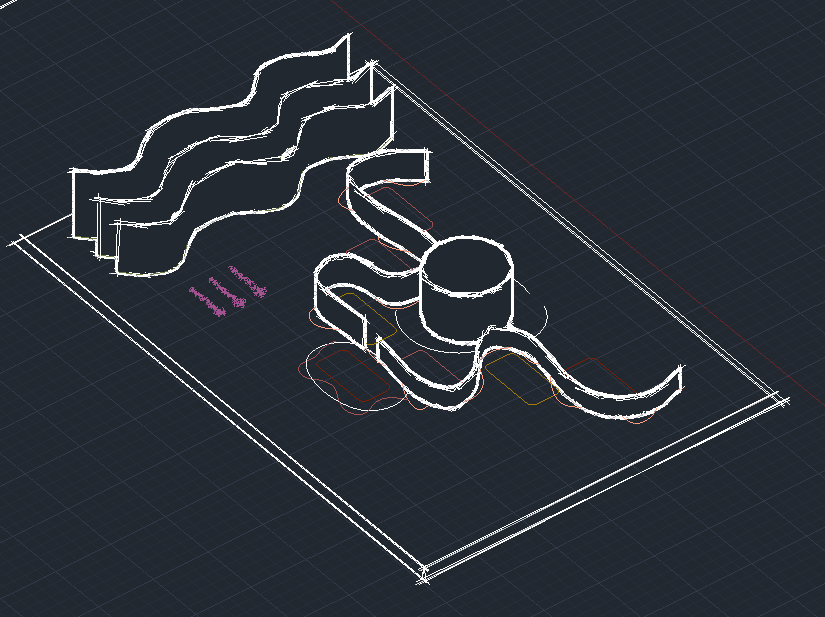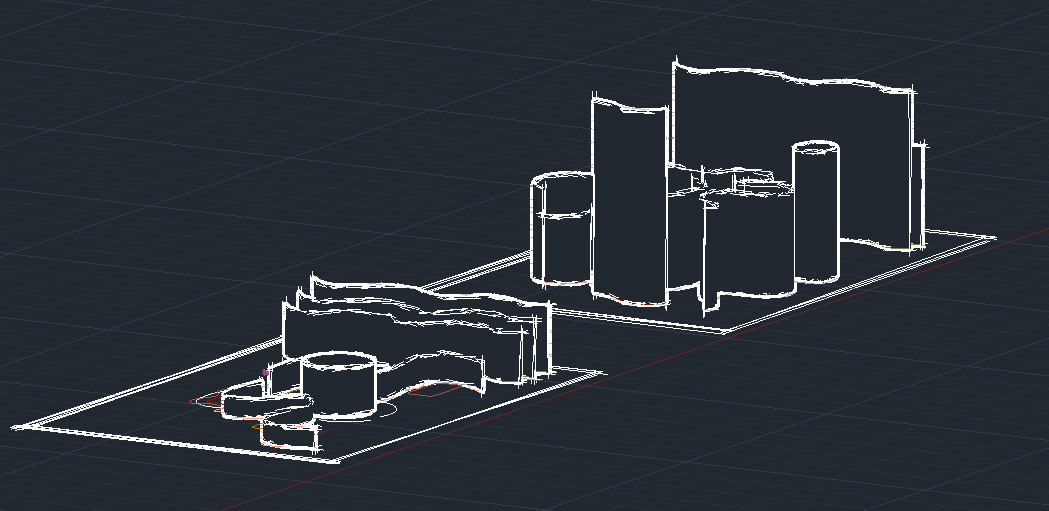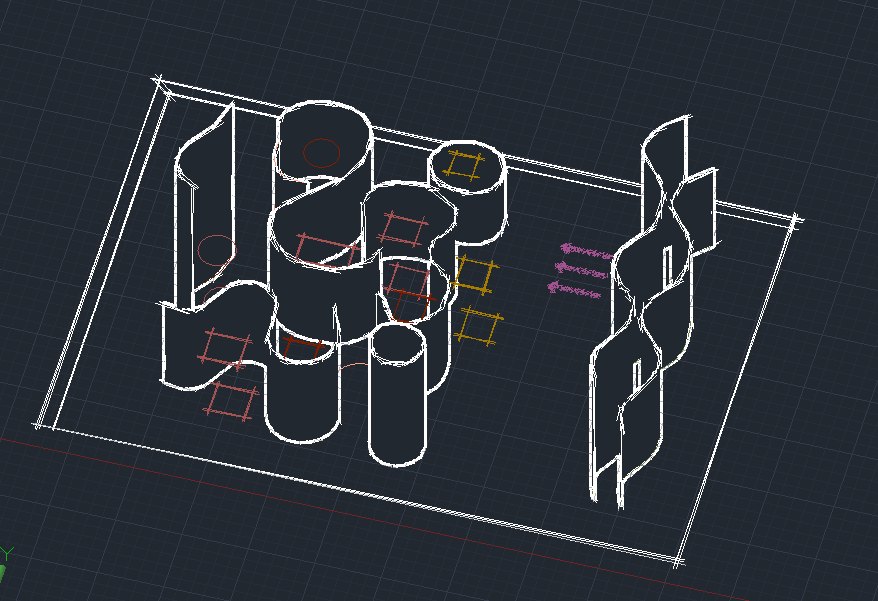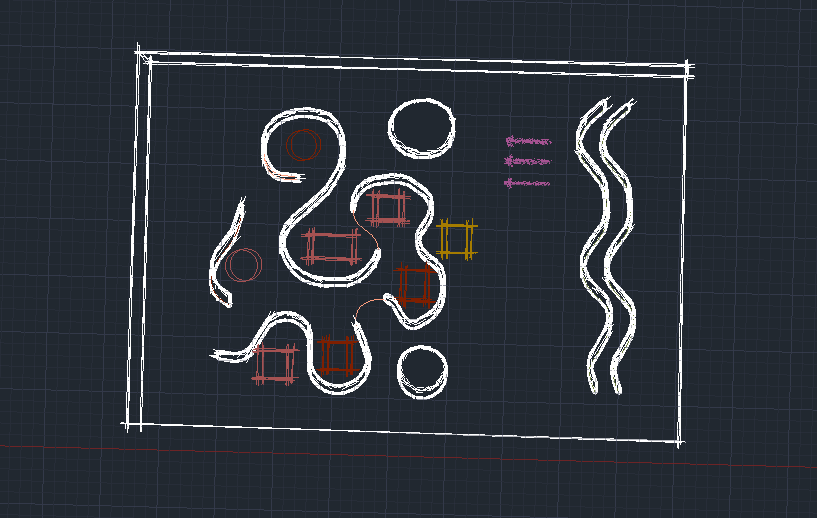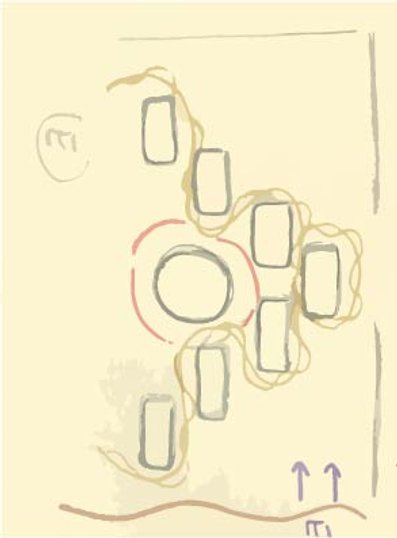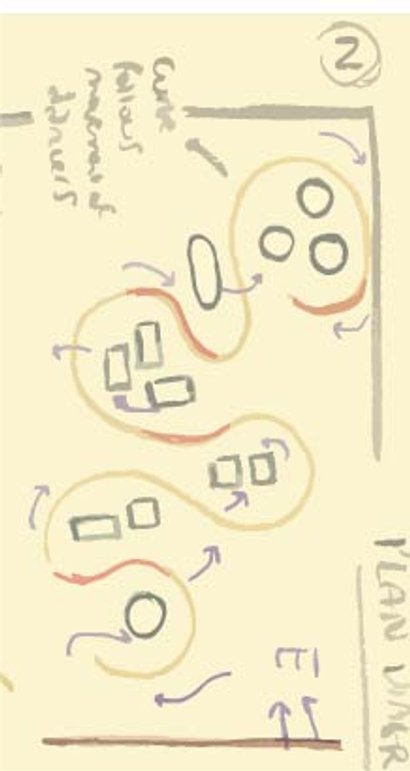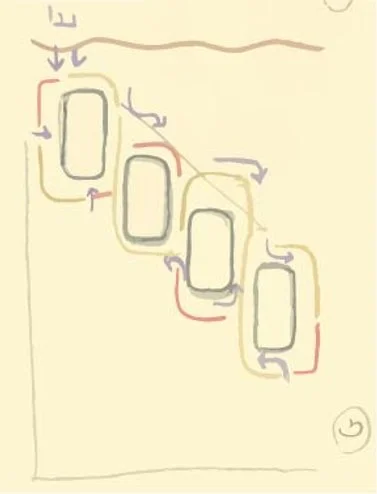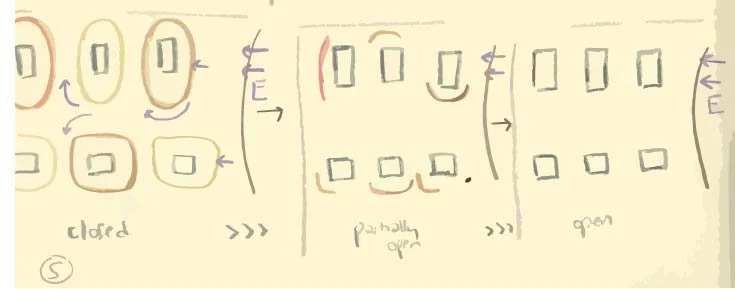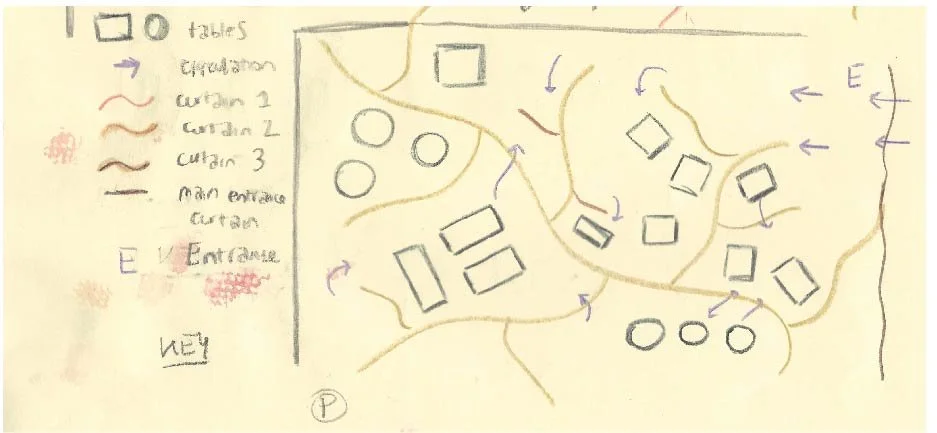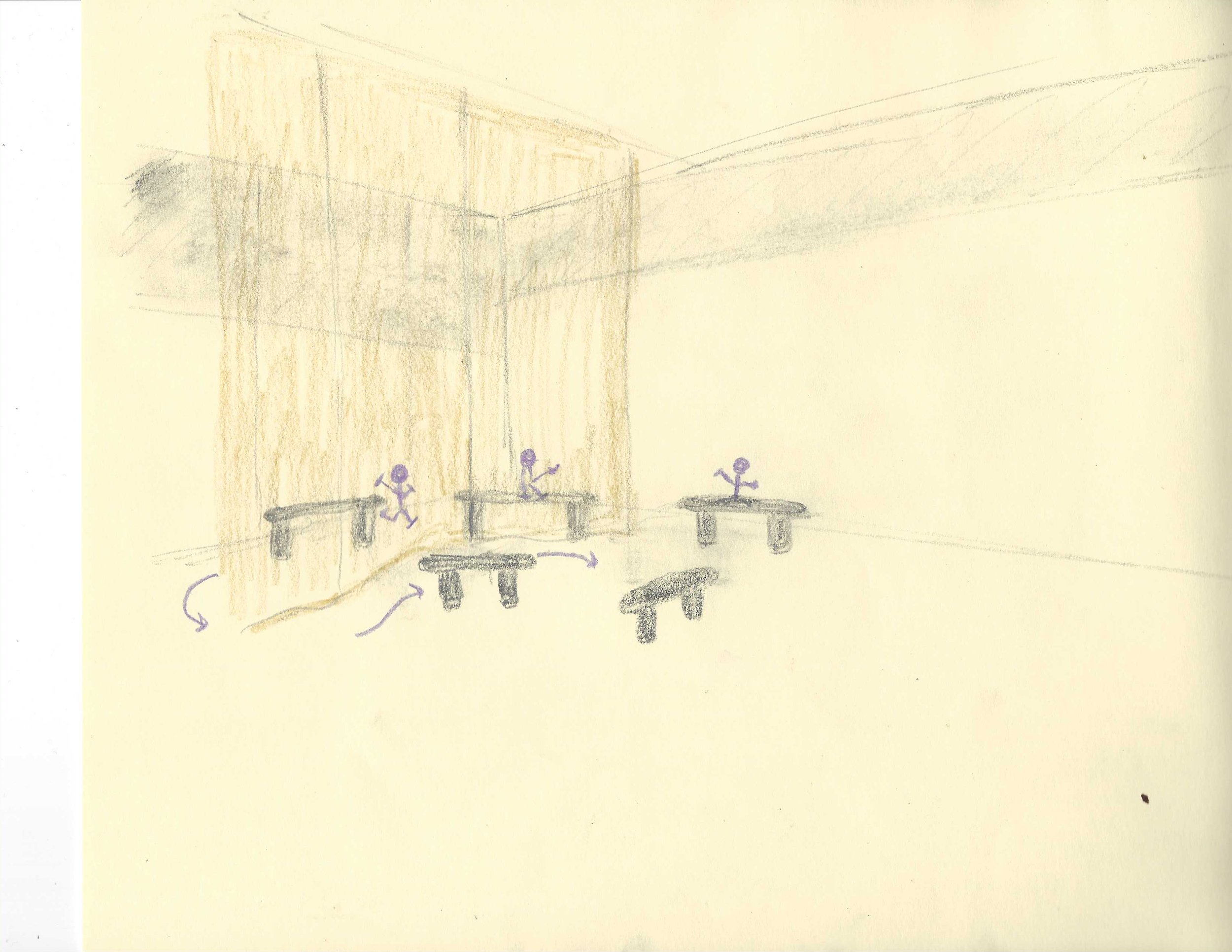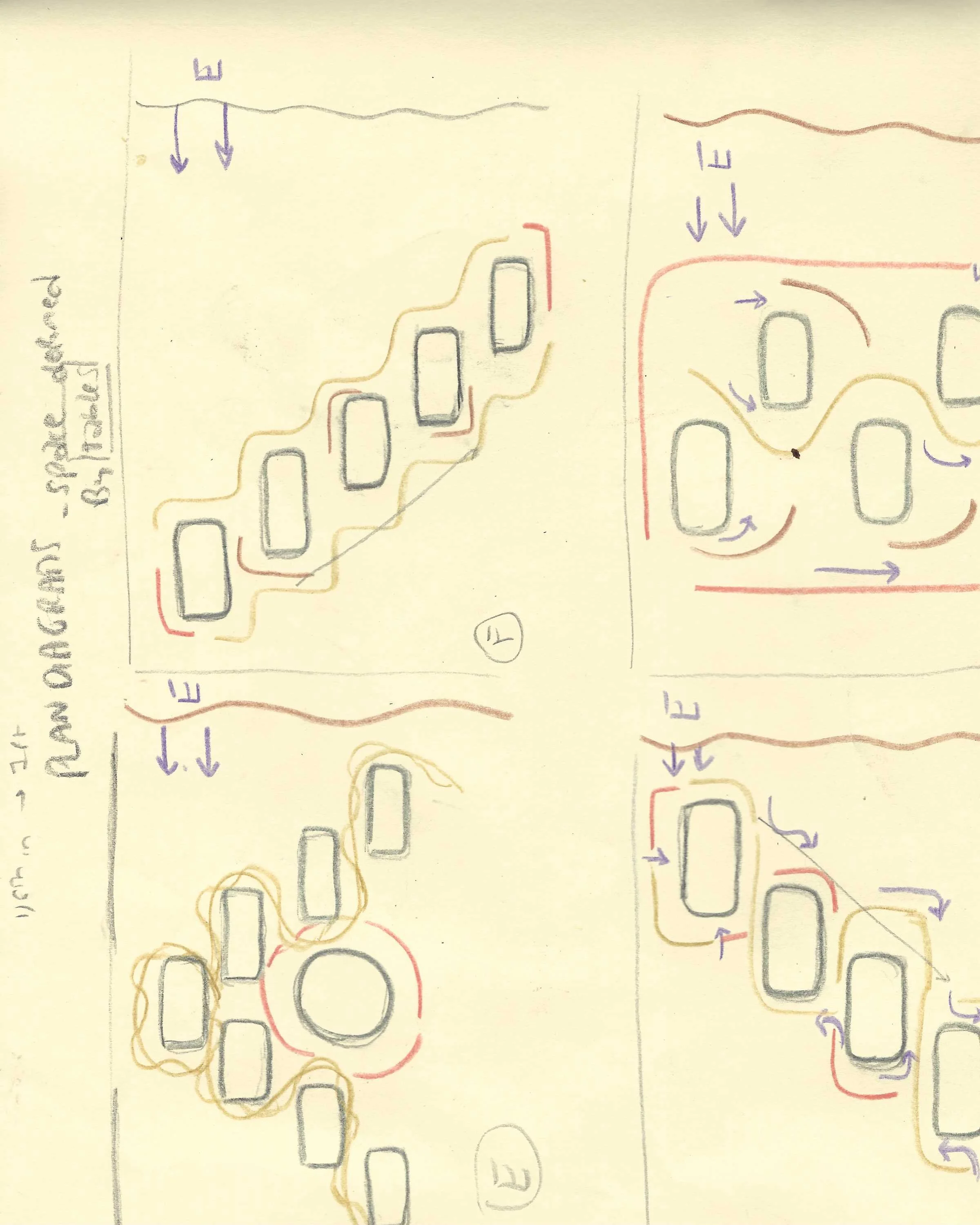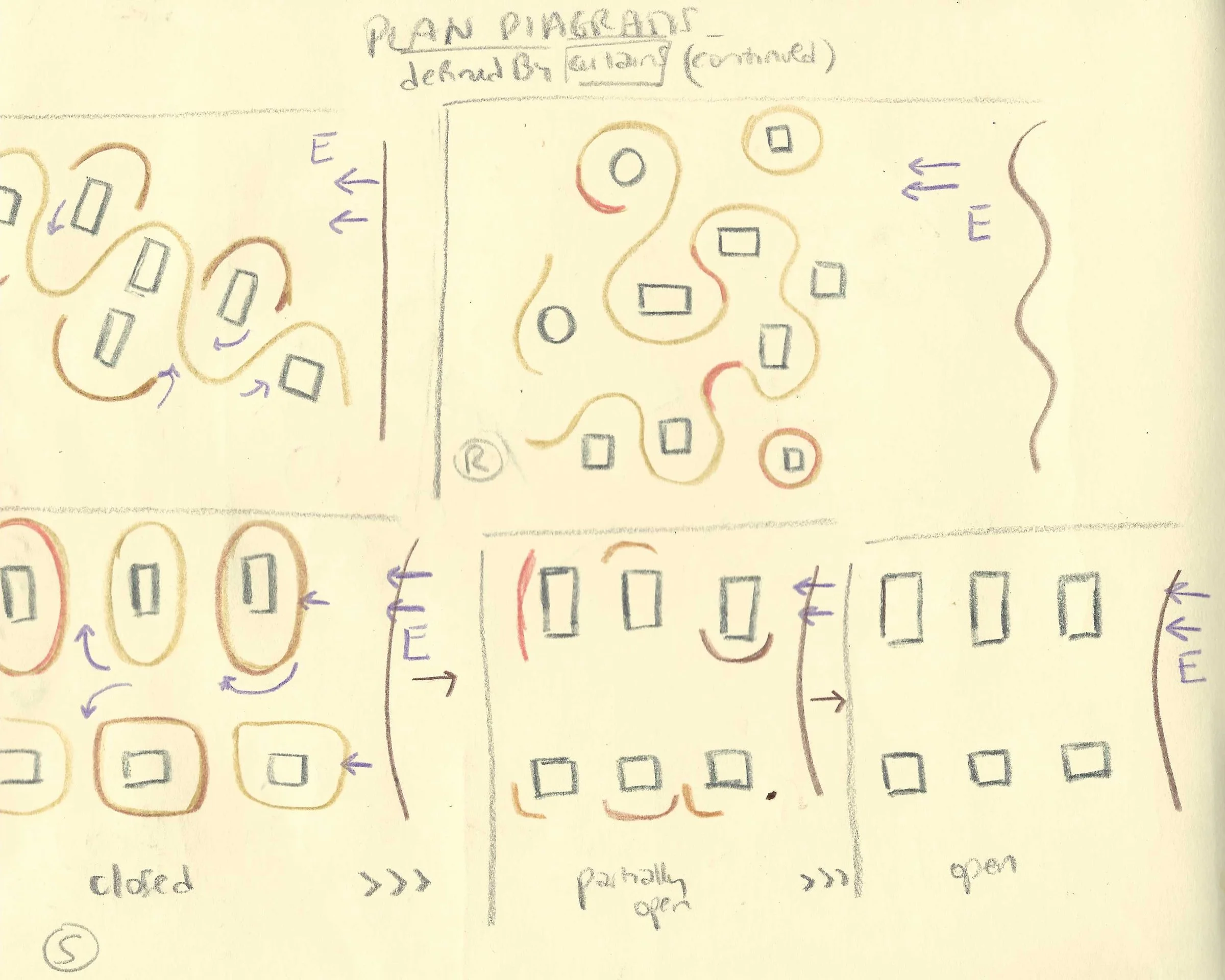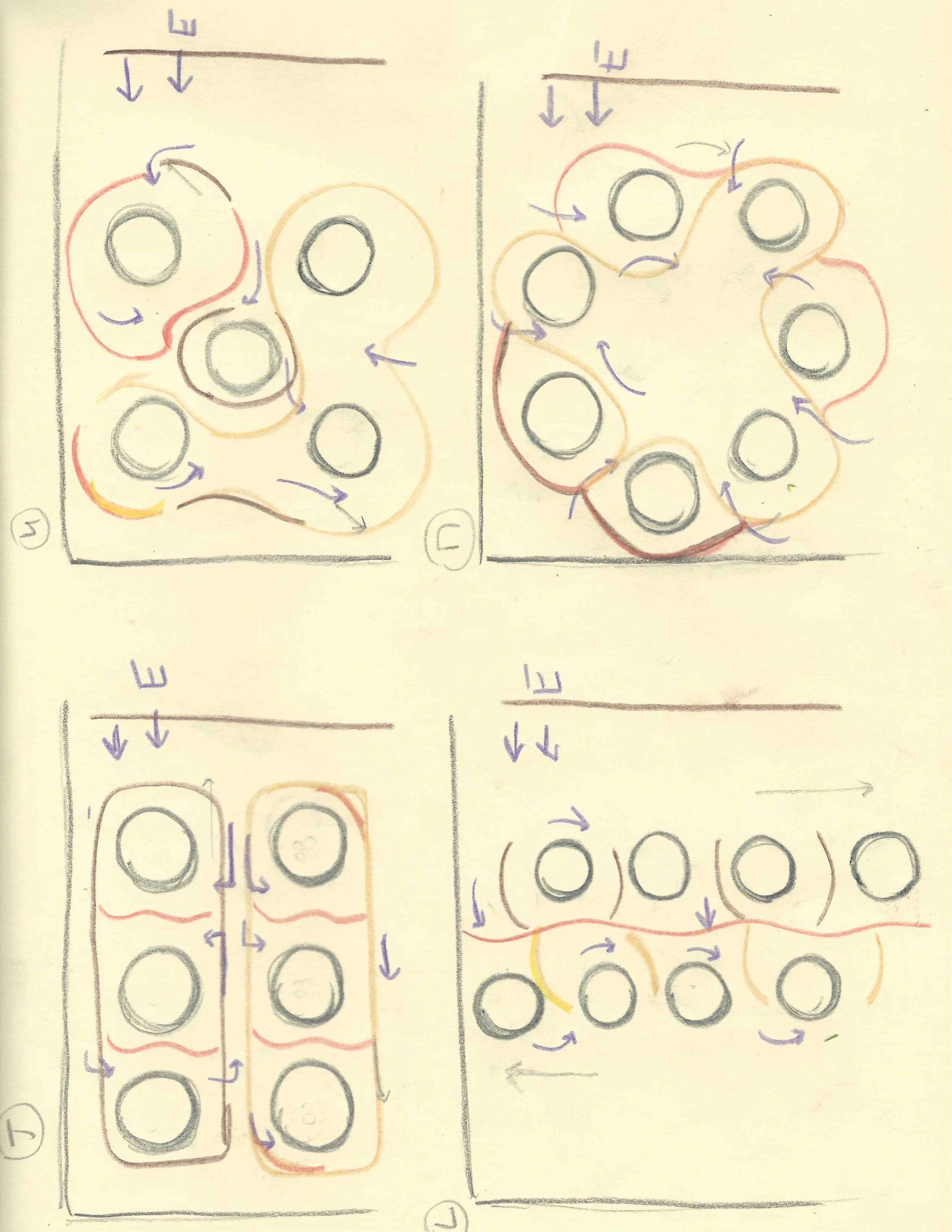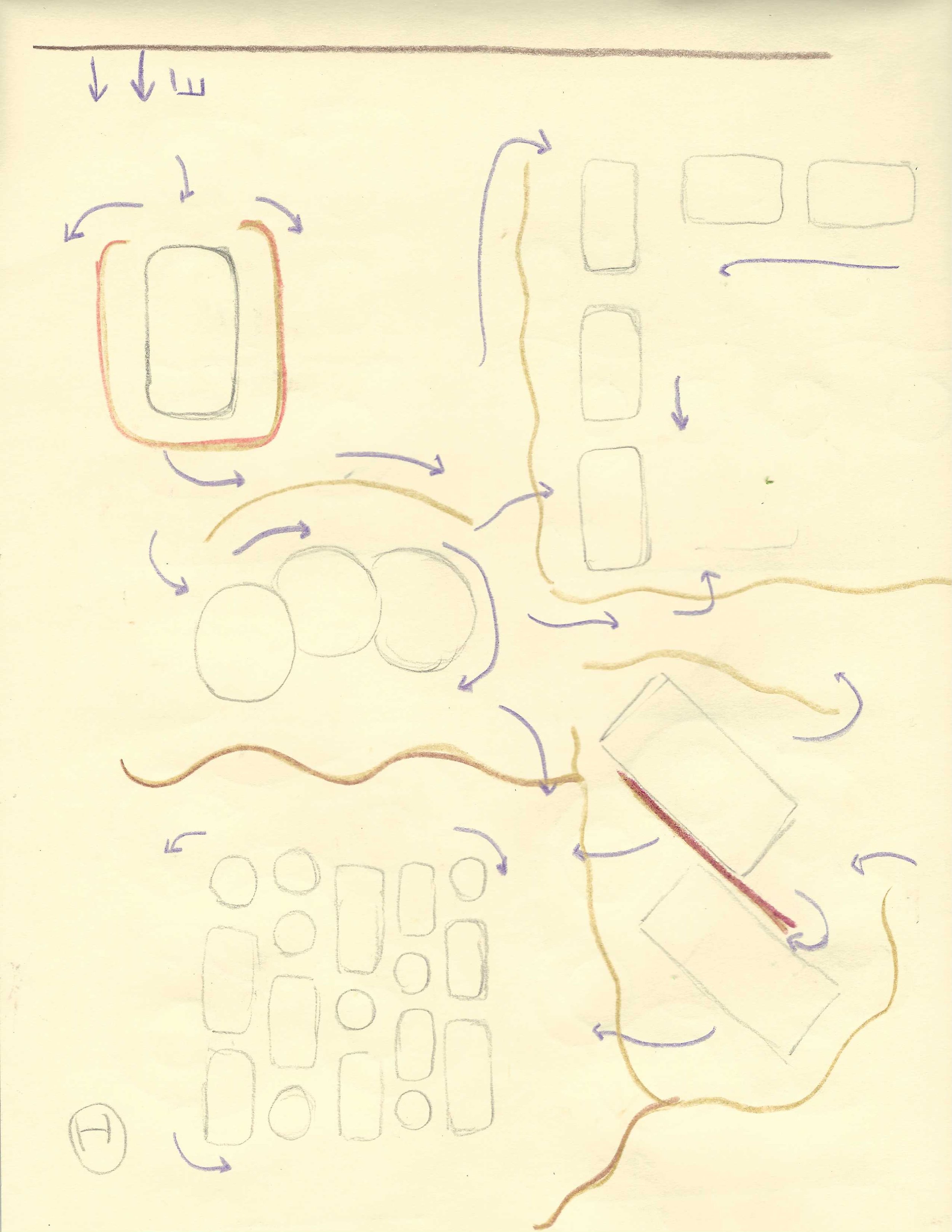Choreographing Space (version 1), 2021
For a long time, I have had an idea brewing in my head: to merge a restaurant with a dance performance space and studio, somehow bringing the world of food together with the world of movement. Food and dance are two of my passions, and the experiences they each generate, are, in my perspective, interrelated. Restaurants, for instance, share many concepts with choreography: the behind the scenes versus show dynamic which is translated into back-of-the-house and front-of-the-house roles in the former; the idea of practice and performance — preparation and service in a restaurant kitchen; the idea that, as dancers, we “put on a show”, in the same way that those that work in restaurants “put on a show” for their customers every night in order to provide them with a memorable experience. It is all an experience: a moment in time, a movement in space.
I was fortunate enough to frequently go out to restaurants growing up. It is a singular experience, one I would like for more people to be able to experience as it left an indelible imprint on my life. Paired with my passion and dedication to the craft of dance, I seek to bridge the gap between two creative worlds that are not seen as compatible.
This project is a contribution to this larger concept I have planned. It is a stepping stone towards realizing what I ultimately want to conceive: a creative space where artists from all walks of life can experiment, workshop, create, collaborate, present, perform, and of course share their crafts with the public in the hopes of raising awareness and educating them.
In compliance with my professor’s guidelines, I chose a specific location to set my project in — in this case, it was one of the studios from the Alvin Ailey school of dance. It is a classic dance studio with marley floors, mirrors, and ballet bars. I chose it because of its simplicity and adherence to traditional standards of dance studios, but also because it is bathed in natural light, an essential element in feeling good. I then began to conceptualize how I could “insert” a restaurant in this space, ostentatiously — and quite brutally — forcing the two worlds to meet. Because this project is still very much conceptual, I decided to keep it in sketch format. That also gave me more room and freedom to iterate and play around with different configurations. The possibilities are truly endless, so, this way, I could explore more.
The rectangles in the sketches represent tables as you would see in restaurants. The curved lines represent the curtains that would either enclose or reveal the tables, creating a permeable boundary. Curtains are the epitomical symbol of spectacles, and equally materialize the movement that is inherent to dance. The border they create also reflects the dichotomy between practice and performance, between cooking and eating, the former being the “practice”, the latter being the “performance”. The arrows represent movement, the different ways one could navigate the space. They are, in essence, the choreography.
All in all, this represents an attempt at choreographing space in the context of a restaurant.

